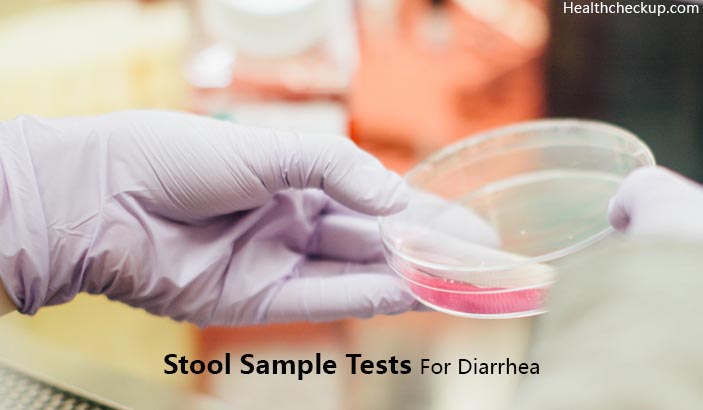When you visit a hospital, a doctor might ask you to have a stool sample test for diarrhea for further diagnosis depending on the presented symptoms. The conditions diagnosed affect the digestive tract which includes infections, cancer or poor nutrient absorptions. The physicians find it necessary to have the lab tests for diarrhea when a patient has symptom as fever, nausea, throwing up, blood or mucus in the feces, stomach pains or diarrhea that has lasted for a couple of days.
Major concerns that lead to stool culture for test diarrhea is when a patient has a weak immune system, has consumer contaminated food or water, is very elderly or young or when the symptoms are severe.
What Does Stool for Test Diarrhea Show?
The sample sent to the laboratory is tested using stains and microscopes to identify the foreign materials such as
- Bacteria
- Virus
- White Blood Cells
- Protein Released By White Blood Cells
The stool tests also help the healthcare professionals determine if a patient’s symptoms are as a result of inflammatory bowel diseases like ulcerative colitis or Crohn’s disease
Stool Sample Tests for Diarrhea
Carrying out a stool sample test for diarrhea is essential as it helps the doctors to identify the condition a patient has as well as identify the available bacteria’s in the stool. Also, it is an effective way of identifying the best treatment to kill the bacteria or viruses. There are various types of stool tests that can be carried out to determine what is wrong with a patient.
1. Stool Ova and Parasite Test
This type of test helps the doctors to identify adult parasites and eggs. The parasite analysis is important in diagnosing Irritable Bowel Syndrome (IBS) in patients who have acute diarrhea. The duration of the condition is usually less than 4 weeks. Chronic diarrhea exceeds the 4 weeks duration and most of the patients diagnosed with IBS and have diarrhea suffer from chronic diarrhea.
2. Stool Gram Stain Test
This kind of test is used to identify bacteria’s present in the stool. The identified bacteria’s are normally present in the intestinal infection. This type of testis mostly used in diagnosing irritable bowel syndrome in acute anemia cases. These cases have a duration of fewer than 4 weeks.
3. Fecal Leukocytes
This test is used to determine the presence of white blood cells in the stool. If there is no inflammation or infection, then the cells will not be present.
4. Fecal Calprotectin
The non-invasive type of test is used to identify a protein which is released by the white blood cells. The protein is common with inflammatory bowel disease.
Stool Test for Diarrhea Preparation
Preparation is vital when one wants to carry out a stool test for diarrhea. First, one should talk to the doctor about the medicines they have been taking. They may range from over the counter drugs, herbs, supplements, vitamins or even illegal drugs. In some cases, a patient may need to stop taking medicines 72 hours before the test so that the results will not be altered.
There are also some types of foods that can tamper with the results. A special diet is advisable for about 48-72 hour before the test. It is important to avoid foods such as red meat, food, and beverages enriched with vitamin C and raw vegetables as they may alter the results.
Stool Test for Diarrhea Procedure
To carry out the lab tests for diarrhea, a staple has to be provided. The doctor gives the patient a container and special instructions on how to collect the sample and label it. The following steps guide the patients on how to take a stool sample for diarrhea efficiently:
- The doctor gives the patient a clean container which is used to collect the sample, the patient should ensure that it remains clean and collect the sample by placing a plastic wrap to collect the stool if not watery or loose.
- The patient should make sure the sample does not come into contact with the toilet to avoid collecting external germs.
- With the given spoon or spatula, one should scoop the sample and place it nicely in the container. Using hands for collection are not advisable.
- The container should not be overfilled. It is vital to include the mucus, watery, or bloody pieces of the sample for effective testing and results.
- It’s essential to pee before talking the sample stool to avoid mixing the sample with urine. It may alter the results of the test.
- After putting the container in a plastic sealed bag, it is wise to wash the hands well and clean up the leftover of the collected stool.
- The sample should be taken to the doctor as soon as possible. It can also be stored in your refrigerator but that should not exceed 24 hours.
Results and Interpretation of Stool Test for Diarrhea
The test results can either be negative or positive.
- Negative results mean there were no germs in the stool thus no infections found.
- A positive result means otherwise and shows the presence of virus, germs, and bacteria.
- Bacteria in stool mean that a patient has parasitic infections, irritable bowel syndrome or other problems.
Through diagnosis and analysis of the stool, the doctor is able to administer the right antibiotics and another kind of treatments to the patient to help fight against the bacteria. In some cases, a follow-up examination may be required to assess the case further.
Conclusion
Most adults experience mild diarrhea which is considered normal. It is, however, vital to get a routine stool examination to determine the severity of diarrhea. If diarrhea persists, it is wise to see a health provider and submit a stool sample test for diarrhea to determine its cause. Also, it is a good approach to determine if it is an acute or chronic diarrhea and get the necessary treatment.
Medically Reviewed By









